Class Mammalia
Order Artiodactyla
Suborder Ruminantia
Family Bovidae
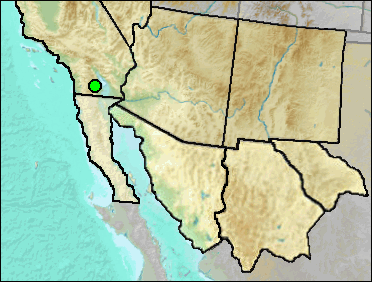
The identification to one of these two taxa is on the basis of these two being the only known bovids within the time range: 1.77 to slightly less than 0.76 mya (Murray 2006).
Sites.
Irvingtonian: Anza-Borrego (Murray 2006).
Literature. Murray 2006.
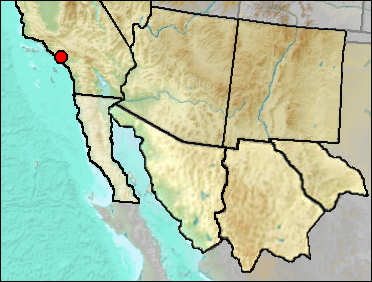
Sites.
Rancholabrean: Malibu (Jefferson 1991b).
Literature. Jefferson 1991b.
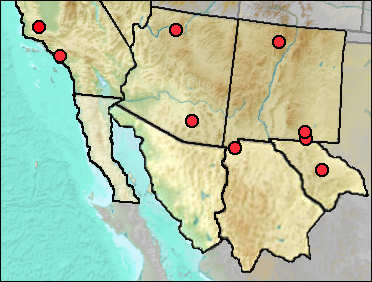
Synonyms. Preptoceras sinclairi. Preptoceras sinclairi and Euceratherium collinum are considered conspecific, with the different character of the horn cores upon which they are named possibly being a matter of the degree of maturity (Kurtén and Anderson 1980). Schultz and Howard (1935) reported both from Burnet Cave, naming a new subspecies for each (E. c. morrisi and P. s. neomexicanus).
Shrub-oxen were chunky creatures somewhat smaller than bison and with short, sturdy metapodials (Fig. 1). Occurrence in caves in the Southwest suggests they were at home in rough, broken country. Judging from size differences in the metapodials, there was notable sexual dimorphism.
U-Bar Cave produced remains of not only males and females, but also of young animals. Although conceivably all remains could have been brought in by predators, it seems somewhat more likely that the shrub-oxen were utilizing caves for shelter.
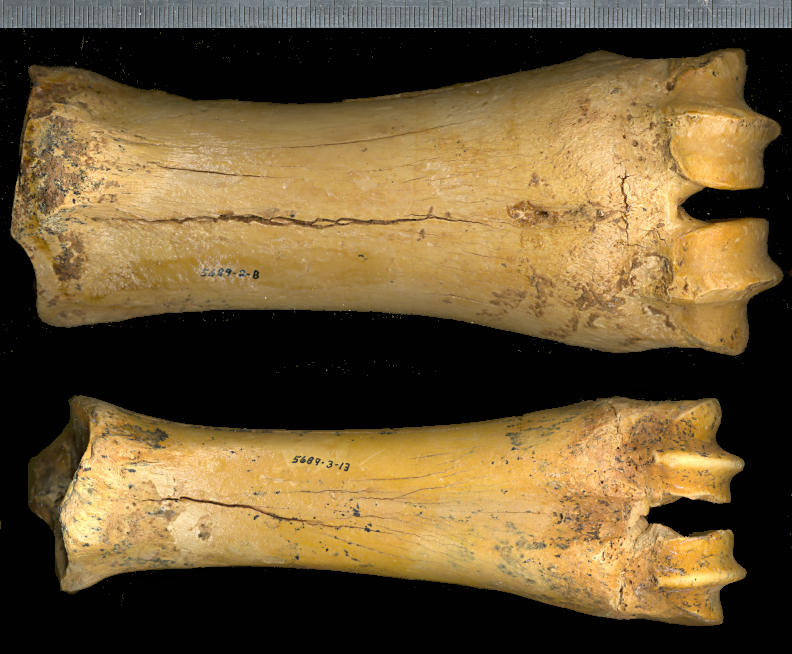
Fig. 1. Metapodials of Euceratherium collinum. At top, an anterior cannonbone of a presumed male; at bottom, a posterior cannonbone of a presumed female. Millimeter scale.
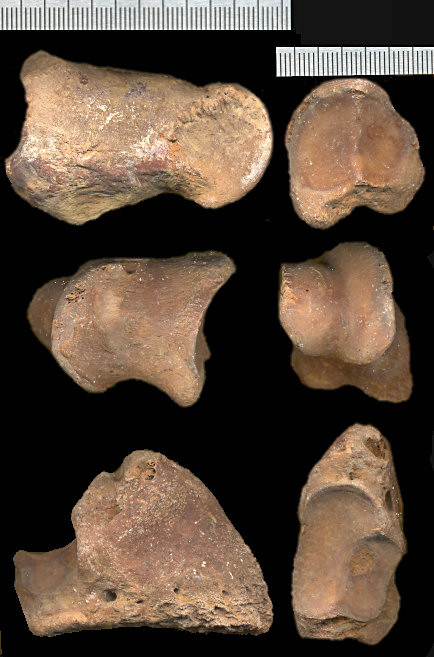 Fig. 2 (left).
Euceratherium phalanges. Top left, lateral view of PH I (UTEP 5689-1-14). Top right and middle row,
proximal, lateral, and distal views of PH II (UTEP 5689-1-44). Bottom row, lateral and proximal views of
PH III (UTEP 5689-1-112). Scale in mm.
Fig. 2 (left).
Euceratherium phalanges. Top left, lateral view of PH I (UTEP 5689-1-14). Top right and middle row,
proximal, lateral, and distal views of PH II (UTEP 5689-1-44). Bottom row, lateral and proximal views of
PH III (UTEP 5689-1-112). Scale in mm.
Fig. 3 (right). Shrub Ox, Musk Ox Cave. Photograph from Santucci et al. (2001), courtesy of the U.S. Park Service.
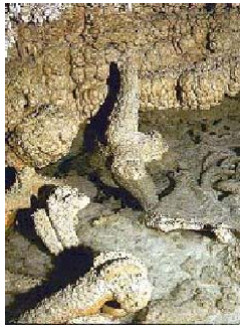
Youngest dates for Euceratherium (11,950 ± 50 BP) and E. collinum (11,630 ± 150 BP) were listed by Fiedel (2009).
Sites.
Rancholabrean: Hord Rock Shelter (Smith 1934)
Late Rancholabrean: Abiquiu (Morgan and Lucas 2005; Simpson 1963).
Wisconsin: CB:8:1 (Mead et al. 2003).
Mid Wisconsin: CC:5:3 (Mead et al. 2003); McKittrick (Schultz 1937); U-Bar Cave (Harris 1987: cf.).
Mid/Late Wisconsin: Rancho La Brea (Stock and Harris 1992: cf.).
Late Wisconsin: Deadman Cave (Mead et al. 1984); Muskox Cave (Logan 1981); U-Bar Cave 18-20 ka (Harris 1989: cf.); U-Bar Cave 13-14 ka (Harris 1989); U-Bar Cave 14-15 ka (Harris 1989); U-Bar Cave 15-18 ka (Harris 1989).
Late Wisconsin/Holocene: Burnet Cave (Schultz and Howard 1935).
Literature.
Fiedel 2009; Harris 1987, 1989; Kurtén and Anderson 1980; Logan 1981; McDonald et al. 2004; Mead et al. 1984; Mead et al. 2003; Morgan and Lucas 2005; Schultz and Howard 1935; Simpson 1963; Smith 1934; Stock and Harris 1992).
Last Update: 7 Aug 2014